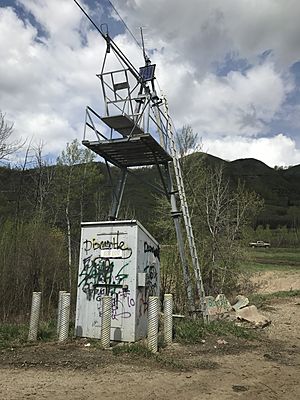Beatton River facts for kids
The Beatton River is an important river in north-eastern British Columbia, Canada. It's like a smaller stream that flows into a much bigger one called the Peace River. The Beatton River starts near Pink Mountain. This spot is about 10 kilometers (6 miles) west of a small town that shares the same name, right by the famous Alaska Highway.
The Beatton River flows for about 240 kilometers (150 miles). It travels mostly east, then turns south. Finally, it joins the Peace River, just a bit past the city of Fort St. John. As it flows, the river winds and turns a lot through thick boreal forests and muskeg (which are like swampy, boggy lands). Its two main smaller rivers that flow into it are the Doig River and the Blueberry River.
Who Lived by the River?
The land around the Beatton River has been home to people for a very long time. The Dane-zaa or Beaver First Nation people have lived here for many generations. Experts who study old human settlements, called archaeologists, have found signs that people were living in this area at least 10,000 years ago!
In the past, the mouth of the Beatton River was an important place. A trading post was set up there in 1806 by the Northwest Company. This was part of the fur trade that brought Europeans to the area. In fact, the very first European settlement in what is now British Columbia was Rocky Mountain Fort, built in 1794. It was located near the present-day Fort St. John. The Beatton River became a key path for First Nations people to trade with the European newcomers. Today, the city of Fort St. John is located to the west of the Beatton River.
How the River Got Its Name
The Beatton River wasn't always called that. It was first known as the "North Pine." The river is now named after a man named Frank Beaton (1863–1944). He was the manager of the Hudson's Bay Company trading post in the early 1900s. He also claimed land by the river to live and farm. Even though Frank Beaton spelled his last name with one "t," the river is now spelled "Beatton" with two "t"s.


